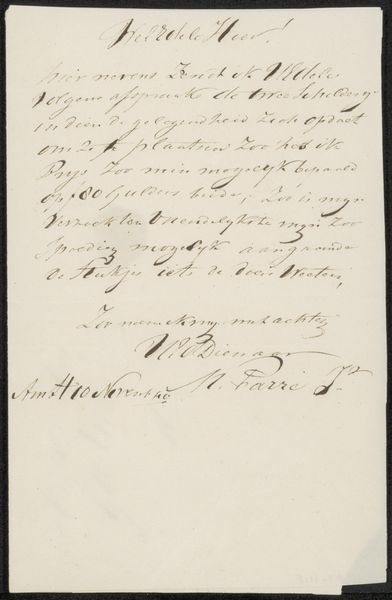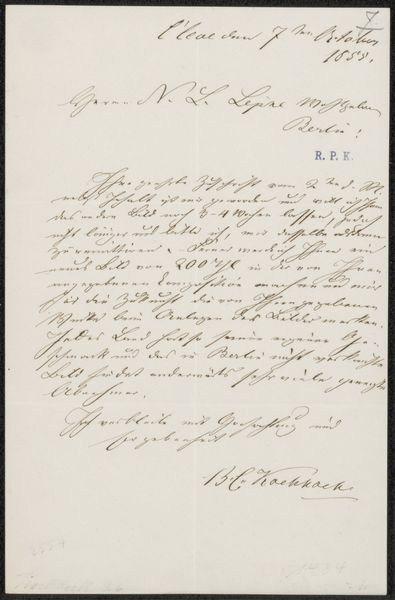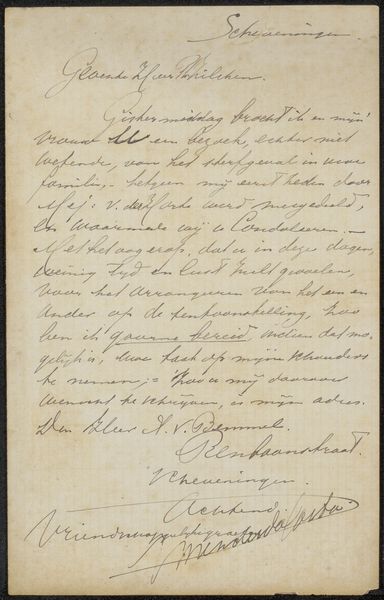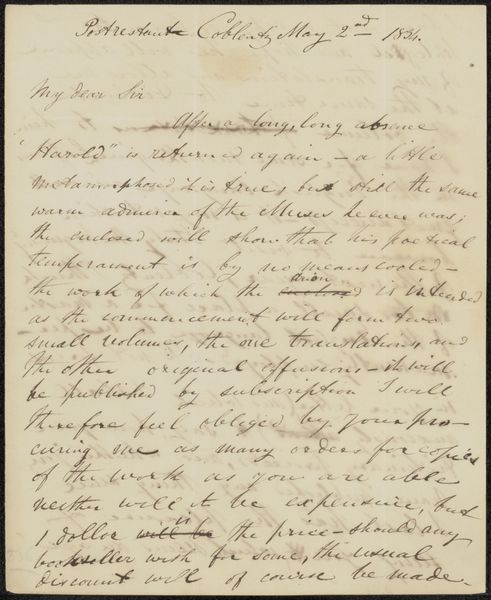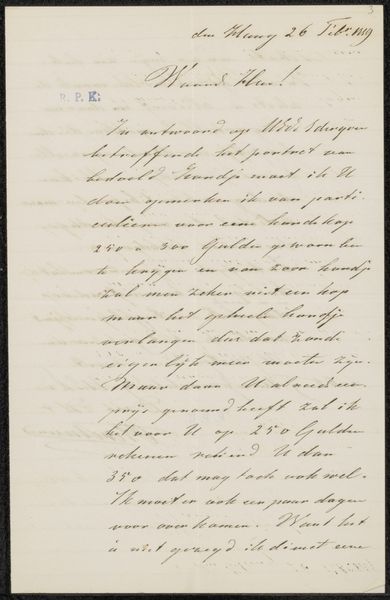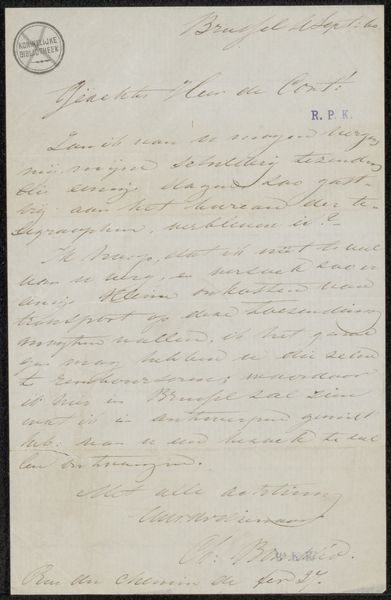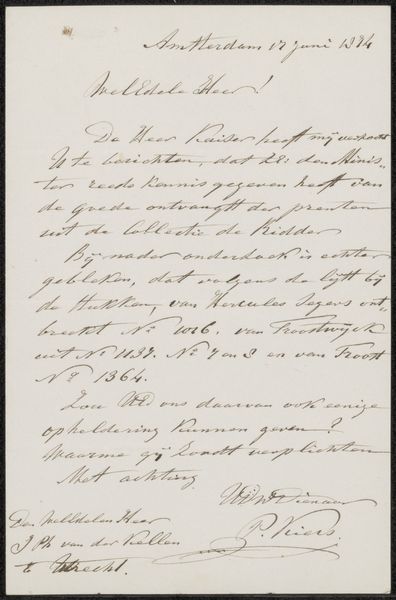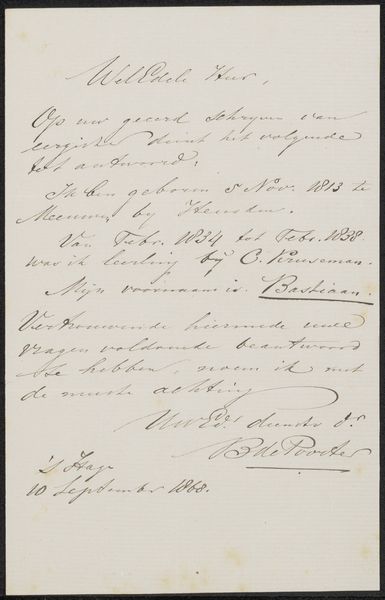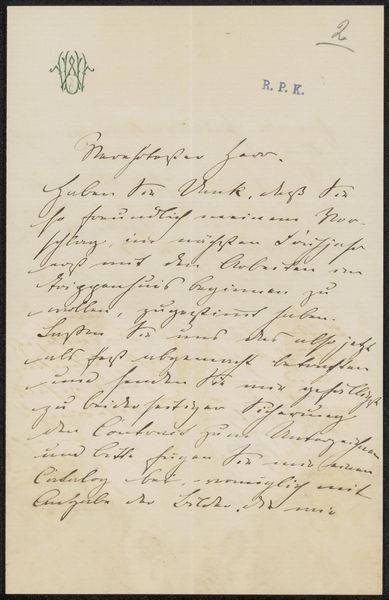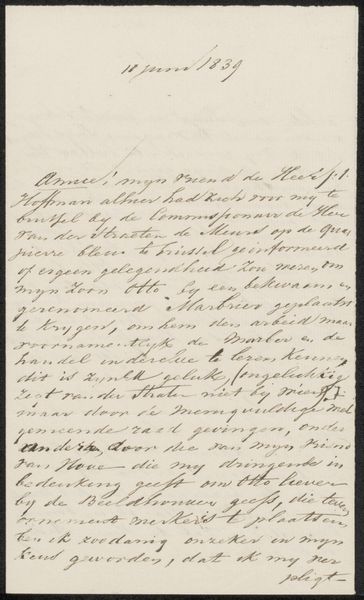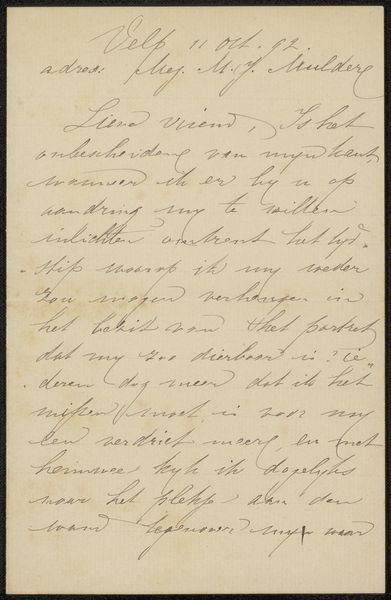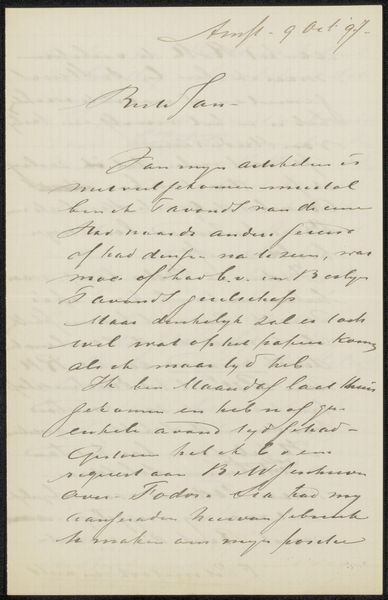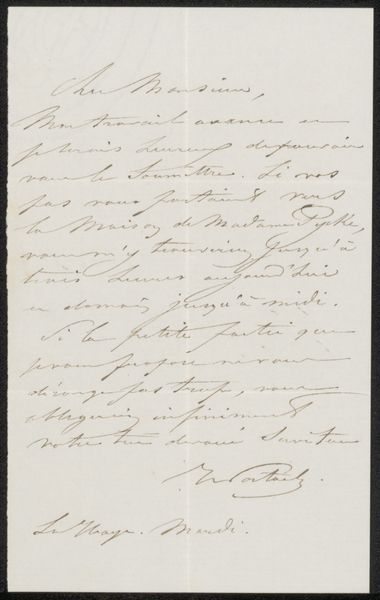
drawing, paper, ink
#
drawing
#
paper
#
personal sketchbook
#
ink
#
calligraphy
Copyright: Rijks Museum: Open Domain
Curator: This is "Brief aan anoniem," or "Letter to Anonymous," possibly from 1888, by Johan Hendrik Weissenbruch, housed here at the Rijksmuseum. It’s ink on paper. Editor: A letter! Well, doesn’t this feel intimate and rather vulnerable? Just looking at the delicate, spidery script, I feel like I’m intruding on someone’s private thoughts. Curator: It does have that quality. As a drawing—since it's filed as such—it invites a different kind of reading, where the pressure of the pen, the absorbency of the paper, and the very act of writing become sculptural. Editor: It looks like he wrote the date and a location up at the top – ‘s Hage, December 3, 1888, but is that just part of the art itself or something functional? Was the creation of letter as functional piece for communication ever artful? Curator: Absolutely. Weissenbruch saw art in the everyday and elevated the humble act of letter writing through attention to the sheer materiality of the ink, the grain of the paper... he transformed a fleeting gesture into something monumental, something worth preserving, beyond the message itself. Editor: You know, the very existence of this letter raises so many questions. Who was the intended recipient? What secrets did it hold? And why was it ultimately kept, preserved even? This fragile document whispers of lost connections and untold stories. Curator: Think of the labor involved: grinding the ink, preparing the paper, the focused concentration required for calligraphy. It really does challenge that whole dichotomy of high art versus craft. Editor: For me, viewing this through the lens of material engagement unlocks an emotional narrative beyond just its calligraphic elegance or documentary importance. I imagine a slow burn, perhaps a painful one, where words become art because emotion fuels the writing process. Curator: That hits on something real about his dedication, transforming functional prose into a preserved personal artifact. Each stroke becomes a record not just of a thought but also a labor and the material realities that contain it. I come away feeling as if I’ve caught something transient yet eternal, raw and deeply human. Editor: And in it, I feel connected to an unknown person, across the divides of time and class, to those mundane everyday tasks – perhaps this is what makes the artistic moment even more profound and humanly relatable.
Comments
No comments
Be the first to comment and join the conversation on the ultimate creative platform.
